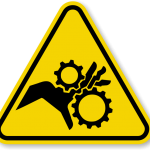
Promising Signals for Jobs in Syracuse
Steady growth and corporate expansion will create jobs in Syracuse. Are your skills in demand?
If you’re looking for a change, or planning your career, you need to know where (and if) your skills match up to available jobs in the Syracuse metro area. Let’s take a look at which industries are growing, and which skills and licenses are in demand.
What Jobs in Syracuse?
While the growth of jobs in Syracuse isn’t headline-grabbing — the region actually lost 0.5% of its private sector jobs since August of 2015 — the overall picture is one of steady, long-term recovery. Coming into the first quarter of this year, the NY DOL found healthy growth in several local industries:

- Management of Companies & Enterprises
- Educational Services
- Social Assistance
- Ambulatory Health Care Services
- Telecommunications
- Specialty Trade Contractors
Now, education and healthcare are demographic-driven industries; if you have more kids, you need more teachers. But the other half of this list can be taken as a signal for cautious optimism. Growth in management, telecoms, building materials, and specialty trades is an indicator of investment in business expansion, while increased demand for luxury goods (and thus employment growth) is a sign of consumer surplus.
So, while the immediate picture may be of a tight, competitive job market, growth in these twelve industries is promising for job seekers.
Job Seekers: Be in Demand
How can you position yourself to grow with Syracuse, rather than struggle to keep up? Karen Knapik-Scalzo, an Associate Economist with the NY DOL Division of Research and Statistics, parsed thousands of Central New York job listings to find out which skills, majors, and licenses regional employers want to see.
In-Demand Job Skills

Online Dialog, CC BY SA 2.0
Knapik-Scalzo’s analysis showed a preference for communications and technical skills, which only become more important as workplace evolves.
- Communication
- Organization
- Customer Service
- Writing
- Leadership
- Computer Software
While technical ability and pure hustle will always be important, this trend in emphasis on soft skills is one we’ve seen in even the most rigorous fields. Technical skills get the job done, but soft skills get you hired … and promoted.
Licensed to Grow
There are a number of fields where proof of technical ability is a hard requirement to get in the door, as a job seeker. These licenses are currently in demand in the Syracuse region:
Transportation:
- CDL Class A
- Commercial Driver’s License
- Automotive Service Excellence (ASE) Certification
Healthcare and Services:
- Registered Nurse
- First Aid CPR AED
- Acute Care Certification
- Nurse Practitioner
- Certified Nursing Assistant
- Certified Information Privacy Professional (CIPP)
- Home Health Aide
- Advanced Cardiac Life Support (ACLS) Certification
Finance:
- Certified Public Accountant (CPA)
Winning College Majors
If you’re returning for continuing education, or just starting to plan your career, you need to invest your tuition dollars where there is the most return. Again, we turn to Knapik-Scalzo’s analysis of job postings in Central New York. Here are the college majors employers and hiring managers want to see:
- Business Adminstration and Management
- Nursing Science
- Engineering
- Computer Science
- Mechanical Engineering
- Computer Engineering
- Electrical & Electronic Engineering Technologies/Technicians
These are solid, well-paying fields – and the jobs are coming.
How This Helps Find a Job
So: Syracuse is on a steady, healthy rebound and we know what industries, skills, and majors are in demand. How does this help you find a job?
Three ways:
- Knowing where the jobs *will be* lets you develop skills and qualifications ahead of time.
- When applying for jobs in Central New York, you know what skills to emphasize.
- With advanced knowledge of hiring trends, you can set up a job alert, apply, and interview before most people even hear about the job.
The first to know and the best prepared will almost always land the job. Good luck and happy hunting!
Featured Image by Christopher Alol, CC BY-SA 2.0












